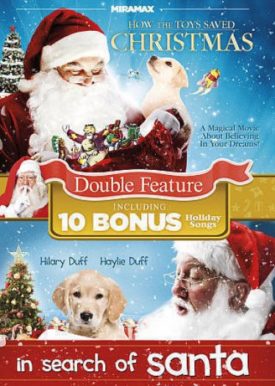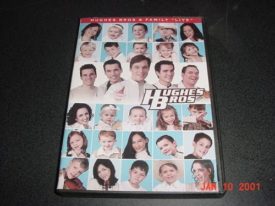Drive (DVD)
Other Marketplace Price: $17.99Sale Price:$9.49
- Ships Same Day.
- FREE Shipping (U.S. Delivery).
- International Shipping (See Shipping Chart Below).
Out of stock
| Shipping US FREE SHIPPING |
FREE Shipping! |
|---|---|
| Shipping US Expedited 2-3 Day |
US Shipping: $14.99 Unlimited Items. |
| Shipping Canada |
Canada Shipping: Flat $34.99. |
| Shipping Int'l Standard | International Shipping: $64.99 Worldwide. |
| Shipping Local Pick Up |
FREE Local Pick Up in Store |
| Condition | New |
|---|---|
| Actor | Adam Siegel, Bill Lischak, David Lancaster, Gigi Pritzker, John Palermo, Linda Mcdonough, Marc Platt, Michel Litvak |
| Publisher | Sony Pictures Home Entertainment |
| Published Date | 2013-05-21 |
| Rating MPA | R |
| Recording Length | 100 |
| Recording Studio | Sony Pictures Home Entertainment |
| Format | DVD |
| Brand | Sony Pictures Home Ent |
| Age Group | Adult |
| Amazon ASIN | B0064NTZQ2 |
| UPC / EAN | 043396392342 |
| Size | 7.5" x 5.25" x .50" |
| Year | 2011 |
| ReleaseDate | 2011-09-16 |
| RuntimeMins | 100 |
| RuntimeStr | 1h 40min |
| Awards | Nominated for 1 Oscar, 79 wins & 180 nominations total |
| Directors | Nicolas Winding Refn |
| Writers | Hossein Amini, James Sallis |
| Stars | Ryan Gosling, Carey Mulligan, Bryan Cranston |
| Produced by | Frank Capra III, Garrick Dion, Joe Fineman, David Lancaster, Bill Lischak, Michel Litvak, Linda McDonough, Jonathan Oakes, John Palermo, Marc Platt, Gigi Pritzker, Chris Ranta, Peter Schlessel, Adam Siegel, James Smith, Jeffrey Stott, Gary Michael Walters |
| Music by | Cliff Martinez |
| Cinematography by | Newton Thomas Sigel |
| Film Editing by | Matthew Newman |
| Casting By | Mindy Marin |
| Production Design by | Beth Mickle |
| Art Direction by | Christopher Tandon |
| Set Decoration by | Lisa K. Sessions |
| Costume Design by | Erin Benach |
| Makeup Department | Linda Arnold, Medusah, Michael Moore, Gerald Quist, Ronnie Specter |
| Production Management | Jim Behnke, Alice S. Kim, Jeffrey Stott, Michael Toji |
| Second Unit Director or Assistant Director | Dieter Busch, Frank Capra III, Mark Carter, Darrin Prescott, Vincent G. Gonzales, Pamela Monroe, Ronan O Connor |
| Art Department | Salvador Anaya, Will Blount, Todd Butler, Denis Cordova, Kyle Craig, Joshua Dobkin, James Doh, Chris Eguia, Joseph Feld, David Goldstein, Megan Greydanus, Bart C. Hubenthal, Charles Kern, Luz, Dana McCall, Michael Mestas, Jason Olson, Richard Robinson, Nick Stanton, Freddy Waff, Raymond Waff, Isidoro Avila, Angie Kern, Craig Stoa |
| Sound Department | Julie Altus, Lon Bender, Sean Byrnes, Kerry Carmean-Williams, Krissopher Chevannes, Robert Eber, Scott Edelson, Victor Ray Ennis, Robert Fernandez, Paul Hackner, Catherine Harper, Dan Korintus, Darrin Mann, Christopher Moriana, Dave Paterson, Lucifer Roesch, Dean St. John, Greg Steele, John C. Stuver, Damian Volpe, Greg Zimmerman, Peter Zinda, Mark DeSimone, David Pringle, Paul Stula, Paul Yurt |
| Special Effects by | James Lorimer, William H. Schirmer |
| Visual Effects by | John Myers, Jerry Spivack, Peter Amante, Justin Beaupre, Casey Conroy, Elbert Irving IV, Caleb Owens, Lauren Ritchie, Michael D. Smith, Dottie Starling, Mark Wilhelm |
| Stunts | Wade Allen, Dean Bailey, Donny Bailey, Dieter Busch, Jeremy Fry, Lane Leavitt, J. Travis Merendino, Robert Nagle, Darrin Prescott, Larry Rippenkroeger, R.A. Rondell, Michael Runyard, Rich Rutherford, Mam Smith, Alex Wen, Danny Wynands, Craig Baxley Jr., Joe Bucaro III, Jimmy Hart, Jody Hart, Greg Knapp, Ed McDermott II, Allan Padelford, Kenny Richards, Scotty Richards |
| Camera and Electrical Department | Dana Arnold, Patrick Brennan, Kurtis Burr, Peter Clemence, Sean Devine, Simon England, Richard Foreman Jr., Vadim Frumin, Chris Gordon, Amy Hoffecker, Jeffrey A. Johnson, Alex Klabukov, Gregory Lundsgaard, Chris Maybugh, Sergius Nafa, Anthony G. Nakonechnyj, Nino Neuboeck, Ryan Nguyen, Ryan Pacheco, David A. Parks, John Priebe, Jerry Sandager, Jake W. Smith, Hannes Steixner, Joshua Stern, Stephen Thorp, Dempsey Tillman, Anders Yarbrough, Greg Baldi, Mike Barnett, Micah Y. Bisagni, Chris Christensen, Mario Contini, Jerardo Gomez, David González, Tom Heigl, Alan Jacoby, Jordan Lapsansky, Drew Lauer, Jim Marquette, Luca Mercuri, Marty Miller, Adam Neas, Michael Orr, Michael E. Pacheco, Robert Petrin, Chanel Raisin, Jesse Roth, Shaun Sangkarat, Tom Tcimpidis, Sam Wayman, Steve Wolfe |
| Casting Department | Joe Cappelletti, Lauren Cokeley, Brandi S. Hawkins, Kara Lipson |
| Costume and Wardrobe Department | Gretchen Cayman, Michael Eisenhower, Katy Johnson, Lindsay McKay, Mustapha Mimis, Jean Rosone, Sarah Springer, Mustapha Mimis |
| Editorial Department | Mike Chiado, David Feldman, Liam Ford, Andrew Geary, Thomas McCullough, Michael Nouryeh, Tom Poole, Aaron Ruby, Jack Sheehan, Stefan Sonnenfeld, Devin Sterling, Diego Alex Borghello, Alex Brownley, Gérard Estival, Fred J. Julito, Benj Thall |
| Location Management | Ted Bayard, Richard De Labio, Jeffrey Garrett, Rob Gibson, Jeff Korson |
| Music Department | Eric Craig, James Gibb, Annette Kudrak, Brian McNelis, Mac Quayle, Gregory Tripi, Richard Walters, Johnny Jewel, David Low |
| Script and Continuity Department | Jane Goldsmith, Diego Garzon |
| Transportation Department | Charles Arnone, John Burish, Jesse Cartwright, Michael Cartwright, Chris Deguzman, Howard Doing, Darrell Dubovsky, John O. Falvey, Mary Fritts, Frankie Gearhart, Jesse Gonzalez, Victor González, Mark L. Hendrix, Michelle Jones, Bradley Jay Lesley, Peter Lucas, Richard Maginnis, Laurent Marchard, Steve Mathis, Chris Neitzel, William Powell, Shaun Ryan, James Schulz, Paul Schwanke, Chris Smallwood, Greg Stamant, Chris Stevens, Bret Stewart, Mark Timpe, Helio Trujillo, Toni E. Vanness, Oscar R. Venegas, Jeff Verdick, Jeff Williams Jr., Don Williams, Ryan Gosling |
| Additional Crew | David Andriole, Amy Banks, Dub Behnke, John Eric Bentley, Andrew Boyd, Sheri D. Bradford, Stacy Calabrese, Julie Florendo Camesa, Ardy Brent Carlson, Brynne Chapman, Alex Coffee, Rose Cox, Austin Davoren, Steve De Leon, Rachel Dik, Janette Evans, Kendall Farley, Alyssa Feener, Kristen Figeroid, Robert Funk, Taylor Gerrity, Frida P. Glucoft, Mike Gomez, Raymundo Gomez, Jen Gorton, Cynthia Griffiths, John Gross, Matthew Hadfield, Jim Harvey, James Henderson, Stephanie Ho, Jay Johnson, Tom Just, Shari LaFranchi Blakney, Eric Layne, Lauren Lebeouf, Mela Lee, Amy Lemisch, Joey Levy, Sam Lindy, Virginia Longmuir, Nik Mavinkurve, Kelly McCormick, Nat McCormick, Shane McLoughlin, Aaron Michiel, Rob Mitchell, John David Moffat IV, Miles Mogulescu, Joey Monteiro, Marijana Napoli, Brian O Shea, Lee Perez-Gonzalez, Natalya Petrosova, Scarlett Pettyjohn, Amanda Potts, Sarah Potts, Michael Pucker, John Rhodes, Ruben Rico, Cindy Robinson, Melissa Rotonto, Dee Schuka, Elizabeth Kim Schwan, Rick Shuster, Jo Ann Smith, Jake Stango, Nancy Rae Stone, Mark Svenningsen, Cid Swank, Kirk Thornton, Kate Trefry, Joseph Tuccio, Kari Tyler, Toni Vannes, Tobias Weymar, Claire Wihnyk, Stephanie Wilcox, Zoe Wilschinsky, Jeff Winn, Ann Zoric, Anthony Zoric, Marijan Zoric, Wendy Altman-Cohen, Mark T. Anderson, Lisa Andoh, Mark Atherlay, Blake Babson, Teall Barnes, Rootie J. Boyd, Thomas Brader, Adam Corriea, Eric Corriea, Alexander Dobbs, Zack Tucker Gangnes, Greg Hansen, Chris Hanson, Jack Hooker, Greg Knapp, Darren P. Leis, Julie McCoy, Tamara Nagahiro, Mark Newsom, Dirk Rogers, Kevin Rosenberg, Derek Selander, Christopher Shifflett, Mark Sonoda, Austin Steady, Spencer R. Williams, Phill Zagajewski |
| Thanks | Hossein Amini, Blake Babson, Manuel Chiche, Liv Corfixen, Alexis Garcia, Sergey Gavrishkiv, Hugh Jackman, Alejandro Jodorowsky, Kathy McDonough, Robert McDonough, Deborah McIntosh, Alisa Petrosova, Abby Pucker, Jessy Pucker, Maggie Pucker, Lizzielou Winding Refn, Lola Winding Refn, Jon Reilly, Matthew Reilly, Tara Reilly, Brad Ross, Tom Strickler, Graham Taylor, Vibeke Winding |
| Genres | Action, Drama |
| Companies | FilmDistrict, Bold Films, MWM Studios |
| Countries | USA |
| Languages | English, Spanish |
| ContentRating | R |
| ImDbRating | 7.8 |
| ImDb Rating Votes | 632063 |
| Metacritic Rating | 78 |
| Short Description |
Drive is a 2011 American action drama film directed by Nicolas Winding Refn. The screenplay, written by Hossein Amini, is based on James Sallis s 2005 novel of the same name. The film stars Ryan Gosling as an unnamed Hollywood stunt driver who moonlights as a getaway driver. He quickly grows fond of his neighbor, Irene (Carey Mulligan), and her young son, Benicio. When her debt-ridden husband, Standard (Oscar Isaac), is released from prison, the two men take part in what turns out to be a botched million-dollar heist that endangers the lives of everyone involved. The film co-stars Bryan Cranston, Christina Hendricks, Ron Perlman, and Albert Brooks. Producers Marc Platt and Adam Siegel optioned the source novel after Siegel read a review from Publishers Weekly. Adapting the book proved to be challenging for Amini, as it had a nonlinear narrative. Gosling, one of Platt s top casting choices, eventually signed on for the lead, as he wanted to star in an action-oriented project. Gosling played a pivotal role in the film s production, which included hiring Refn as director and Beth Mickle as production designer. Newton Thomas Sigel oversaw the principal photography, which started on September 25, 2010, was shot on location in various parts of Los Angeles, and ended on November 12. Before its September 2011 release, Drive had been shown at a number of film festivals, including the 2011 Cannes Film Festival, where it received a standing ovation. Refn won the festival s Best Director Award. The film was praised for its direction, cinematography, performances (particularly Gosling and Brooks ), visuals, action sequences, and musical score; however, some critics were appalled by its graphic violence and found that potentially detrimental to the film s box office success. Nonetheless, the film was still a commercial success, grossing $81 million against a production budget of $15 million. Several critics listed Drive as one of the best films of 2011, including the National Board of Review. Its honors include a nomination for Best Sound Editing at the 84th Academy Awards. It has since become popular as a cult film. |
| Box Office Budget | $15,000,000 (estimated) |
| Box Office Opening Weekend USA | $11,340,461 |
| Box Office Gross USA | $35,061,555 |
| Box Office Cumulative Worldwide Gross | $77,187,281 |
| Keywords | Neo noir,nameless character,mythical hero,silent protagonist,very little dialogue |






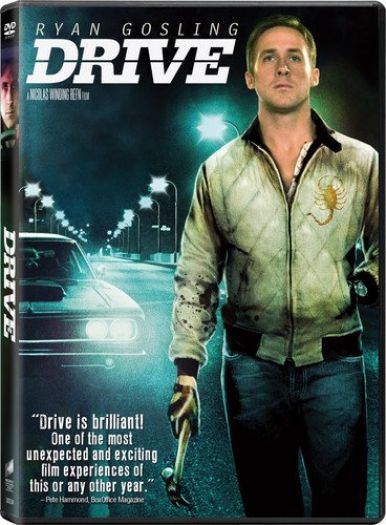
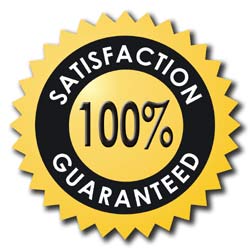 Item is New Stock.
Item is New Stock. 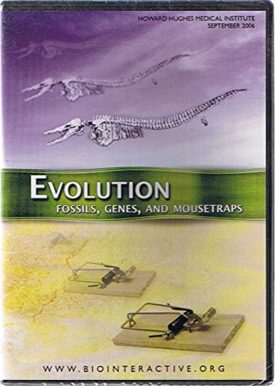
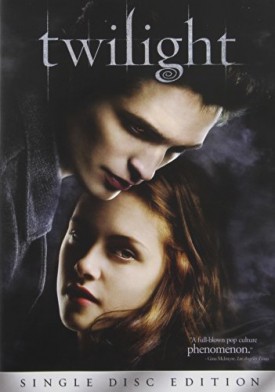
![Medal of Honor - 6-Part Documentary Series - Tin [DVD] [2012] Medal of Honor - 6-Part Documentary Series - Tin [DVD] [2012]](https://cdn.nokomisbookstore.com/wp-content/uploads/2020/07/51G-FWQajQL-275x461.jpg)

